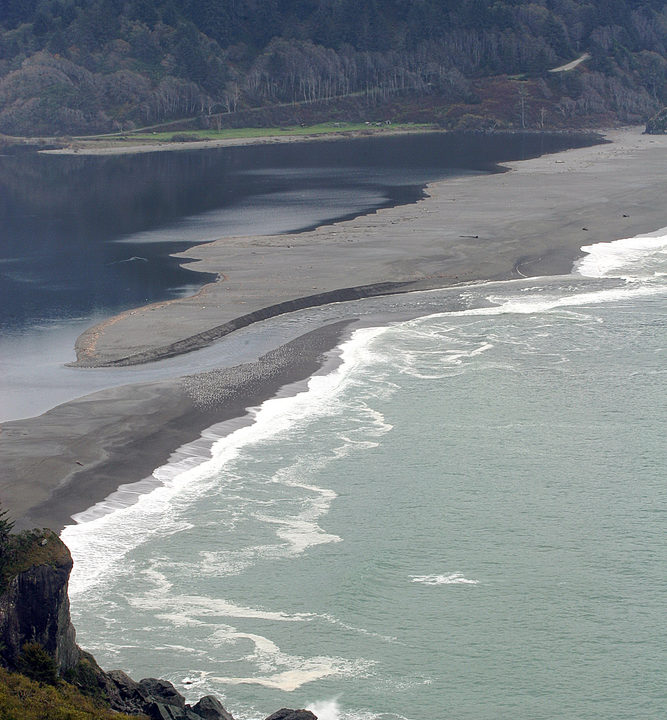April 28, 2014


Leading FSC-wood supplier, CA Redwood Company, is saving their forest’s salmon population.
By Neila Columbo
4/28/2014
In recent decades, the monumental cause of conservation and global economic growth have seemed, at times, incompatible. Important, philosophical debates have characterized these discussions, and now beckon the attention of every facet of society—private industry, government institutions, environmental NGOs, and the public. Emerging from these discussions is the overarching discipline known as Corporate Social Responsibility, and it, too, still seems to be exploring its proper place in the whole of the complex conservation-sustainability-economic development model.
The California Redwood Company (CRC), a subsidiary of the Green Diamond Resource Company, serves as one case example for its approach and effort to strike a balance between environmental stewardship and corporate practice. Green Diamond Resource Company (GDRCo) owns and manages primarily redwood lands in California that supply CRC with logs to produce lumber. As a purveyor of redwood lumber products, CRC shared with SCGH that Green Diamond has 30 full-time staff in California dedicated to conservation planning to ensure its operations provide habitat across the landscape for the species that reside there. This team studies and monitors a variety of terrestrial (land-based) and aquatic (water-based) species and their habitats across the property. One portion of the team’s studies focus on the freshwater streams of the property also called the aquatic program. Set on the North Coast of California, the forest streams on the property are the spawning ‘homes’ for various salmonid species, which have seen its hatch rates and populations decline in the Pacific Northwest during the past century.
Matt House, Aquatic Biologist for the company clearly loves his job, “We have some of the most productive salmonid streams on the North Coast of California. Studying these species, and the streams they live in, is interesting not only for the conservation department employees of the company but also to the countless other scientists that we get to work with.”
The majority of salmonid species in GDRCo’s streams are defined as anadromous, meaning they return from the ocean as adults to spawn in freshwater environments, such as the Coho, Chinook, and Steelhead salmonid species–thus their life cycle as fish mostly occurs in the ocean. Consequently, it can be challenging for researchers to comprehensively study what is affecting changes in salmonid population levels, and, as well, to determine if the freshwater spawning habitat is adequate to maintain viable salmonid populations. However, GDRCo believes it can have an important influence on its surrounding freshwater environment, and its conservation planning group is extending significant effort to ensure its practices do not negatively impact the spawning and rearing habitat for these salmonid species.
Currently, GDRCo’s conservation team is closely monitoring fish on four tributaries in the Little River watershed involving several stages throughout annual spawning cycles. First, trained fisheries biologists survey and observe the primary fish-bearing streams during the winter to count the number and species of adult fish that are seen actively spawning, as well as indicating where there is evidence of salmonid redds (nests), where eggs are deposited. These indicate that fish have already spawned in the stream. These data have been valuable to determine the relative distribution and number of adults in a watershed.
In the final research stages, population levels are estimated using traps to capture and then release smolts—juvenile fish that have become physically ready to enter the ocean environment—as they move downstream toward the ocean from their freshwater habitat. These surveys, although labor intensive and expensive to conduct, provide GDRCo’s research team valuable information for how many smolts are being produced in the freshwater environment. Comparing the survival rates between summer populations and smolts migrating to the ocean also helps determine the limiting factors for smolt survival.
Matt House sums it up like this, “These are challenging species to study because the fish spend a few years as young in the streams on our property. There we have some idea what is happening with the population and then they swim out to sea for a couple of years. That is the big unknown while they are in the ocean. A few years later they return from the ocean to spawn in the stream where they hatched and we can gather some numbers on that cohort again. In between though very little is known about what happens while they are out in the ocean.”
These monitoring efforts are part of 50-year contract with federal agencies, which took 10 years to develop to ensure protection of aquatic resources on the property. In June 2007, Green Diamond, the National Marine Fisheries Service, and the United States Fish & Wildlife Service, signed the Aquatic Habitat Conservation Plan, a 50-year contract, to enhance habitat for six cold-water fish and amphibian species.
“The company has a comprehensive monitoring program in place to study salmonid and other aquatic species on the property that was crafted with state and federal agencies. It has been a great collaboration coordinating with the agencies on these projects,” says Keith Hamm, Conservation Planning Manager for Green Diamond.
To read further about Green Diamond’s Aquatic Habitat Conservation Plan, as well as all of its California management plans and monitoring reports, go to — //www.greendiamond.com/responsible-forestry/california/